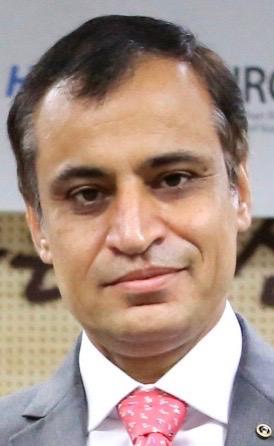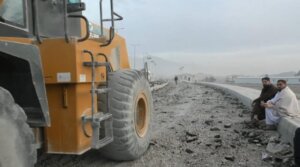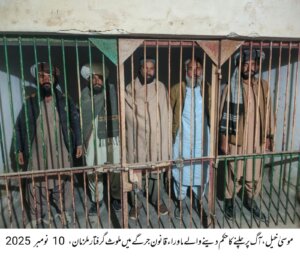Muhammad Asghar Harifal:
LISTEN ARTICLE
Pakistan is cited as one of the countries blessed with strategic locations connecting extremely important geographical regions of Central and South Asia. Historically speaking, the dividends of geography did accrue and they included the fortification of security by enlarging the security apparatus with the help of western powers and economic progress of a few decades, albeit ephemeral in nature. The country was the cynosure of Western attention from its origin thanks to its location. In the decades of the sixties, eighties and, later during the period of the so-called war against terrorism, Pakistan played a crucial role owing to its location. The security compulsions of the western countries, led by America, turned out to be aligned with Pakistan’s security concerns in the region, leading to trusted relations of cooperation.
Pakistan’s predominant traditional security predilection has seriously come under strain
Pakistan is again the hub of changes but, this time, not as the traditional fire-arm battleground, but challenged by growing economies and information technology bewildering advancement, defining states’ power. With the end of the last afghan war in the neighbourhood and seismic political changes at the world chessboard, metamorphosing the world from a unipolar to a multipolar world, Pakistan’s predominant traditional security predilection has seriously come under strain. More distinctly, one of Pakistan’s neighbours and most trusted ally has turned into the second most robust economy of the world challenging the traditional sole power of the world. While another neighbour, although not friendly, is shaping itself into one of the ‘top five world economies. A country’s power is now measured with different yardsticks; compelling the internal power repositories to share the power cake with institutions having responsibilities of economic development and information technology promotion. These two sectors are purported to lead all others towards the prosperity of the country.
Pakistan has once been a hub of tourists
Pakistan, a forex-starved country, can use tourism as one of the instruments for rejuvenating the economy and building an image of a progressive country. Tourism is one of the sectors that will define the country’s image, and it serves as a barometer for all other fields underpinning the progress of the country. The flip side of tourism is that it is too timid to lead; it shows in the last when all other sectors have reassured their performance. Tourism flourishes when the institutions are less interfering in people’s lives and efficient enough, while the society is tolerant of faiths, living styles, dress codes and values of others. Pakistan, undoubtedly, has drifted apart and, for now, is not in that position neither in terms of society or institutions. The encouraging aspect, however, is that improvement in the former helps the latter fall in place leading to change. The ray of hope is that Pakistan has once been a hub of tourists and recourse to the same course is not far from an impossibility.
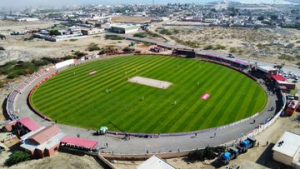
Balochistan is 43% of Pakistan and its tourism promotion will have an incredible impact on the country’s image, attracting visitors from all over the world. Not only that Balochistan has a bigger landmass, but it is also badly affected by the war in Afghanistan and political alienation is manifest from the unrest of the last several decades. Pakistan’s tourism revival strategy must not only begin from Balochistan, the resource allocation for tourism must have this province as a priority, with the share equal to its size. Tourism promotion is not only vital for wider national development, the spectre of terrorism purveying the whole province, in particular in the coastal tourism potential region, can be tackled with the help of tourism promotion.
Diversity in Balochistan’s tourism
Balochistan tourism is characterised by diversity in the fields of tourism. It has a landscape, incorporating all the individual distinctions, all other provinces pride in. Balochistan has ecotourism potential having high mountains of Sulaiman with Takhtte Sulaiman peak, Kirthar, Zarghon, Toba Kakari and several others. It has vast deserts of Jhal Magsi and Kharan. Balochistan contiguous countries have utilized deserts for tourism attraction by providing desert stays and desert sports activities. The Jhal Magsi jeep rally is a thrilling event, albeit circumscribed to a few scions of the affluent class, as the poor can neither afford to participate in it nor have developed the attraction for it. With economic activities being generated, the composition and frequency of these unique sports can change.
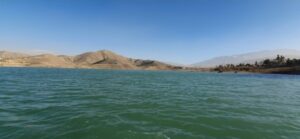
Countries like Egypt, Israel, India and China have utilized cultural heritage to attract tourists generating sizeable forex. Balochistan has Mehargarh, older than all other archaeological sites of Pakistan. The site utilization for tourism purposes will attract visitors from Europe and neighbouring countries. The site development is undertaken by the government of Balochistan and, hopefully, will contribute to the economic development of the province.
Sindh is known for the tourism potential of the coast, with 220 km coast dwarfs before the 770 km coast of Balochistan. Balochistan coast has not only the potential to become the hub of economic activities, but it can also turn into a Dubai for tourists for its clean beaches, sparse population and extremely pleasant weather in winter. Water sports like jet skiing, parasailing, kayaking/canoeing and skiing are some of them attracting economic activities, unparalleled in any part of Pakistan. Cruise travel along with the hotel and restaurant industry will flourish contributing to job opportunities and leading to the alleviation of violence-prone tendencies in the area. The European and other cold areas tourists will find another avenue for winter tourism.
Cultural potential utilization experience by India, China and Japan can be replicated in Balochistan. Balochistan’s pristine, unstinted cultural diversity in the form of cultural treasures of the coastal area, influenced by Africa across; the central Brahvi region; the Naseerabad basin; North Balochistan and the eastern tribal strip are huge sources of cultural tourism.
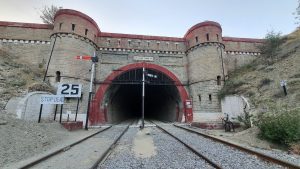
Balochistan’s Hindu religious site of Hinglaj has huge potential to attract Hindu pilgrims from India. The recent unconfirmed reports of Indian Premier, Mr Narender Modi planned visit, in the aftermath of a purported thaw in relations, underline the religious tourism opportunities in the province utilizing Hinglaj temple.
The Balochistan tourism sector is marred by the same malaises characterising Pakistan’s tourism blight but with more intensity and frequency. When Pakistan institutions doddered, Balochistan’s ones caved in. Security or insecurity, for that matter, defined every decision; the same turned into priority and from the same down flew everything. Any mishap was enough for one institution to take up the role of another, instead of reforming the existing one. The policing, even in the capital city, has regressed to an unprofessional and traditional element of state management. Multi agencies working for one role under different hierarchical commands define the state structure.
The other way around is the solution; Jobs, education, healthy life, tolerance, human rights respect by state institutions irrespective of one’s crime, people friendly institutions, especially at airports, all are components of national security as well as tourism.
The author is a former Secretary of Tourism Balochistan Government.
He can be reached at: shangrillapal@yahoo.com
